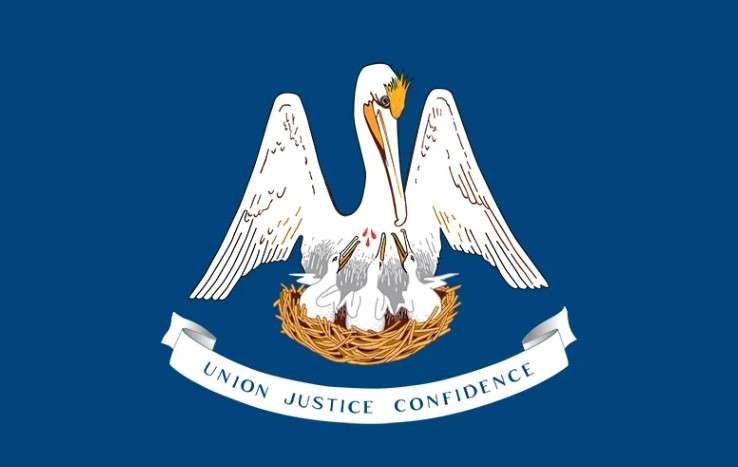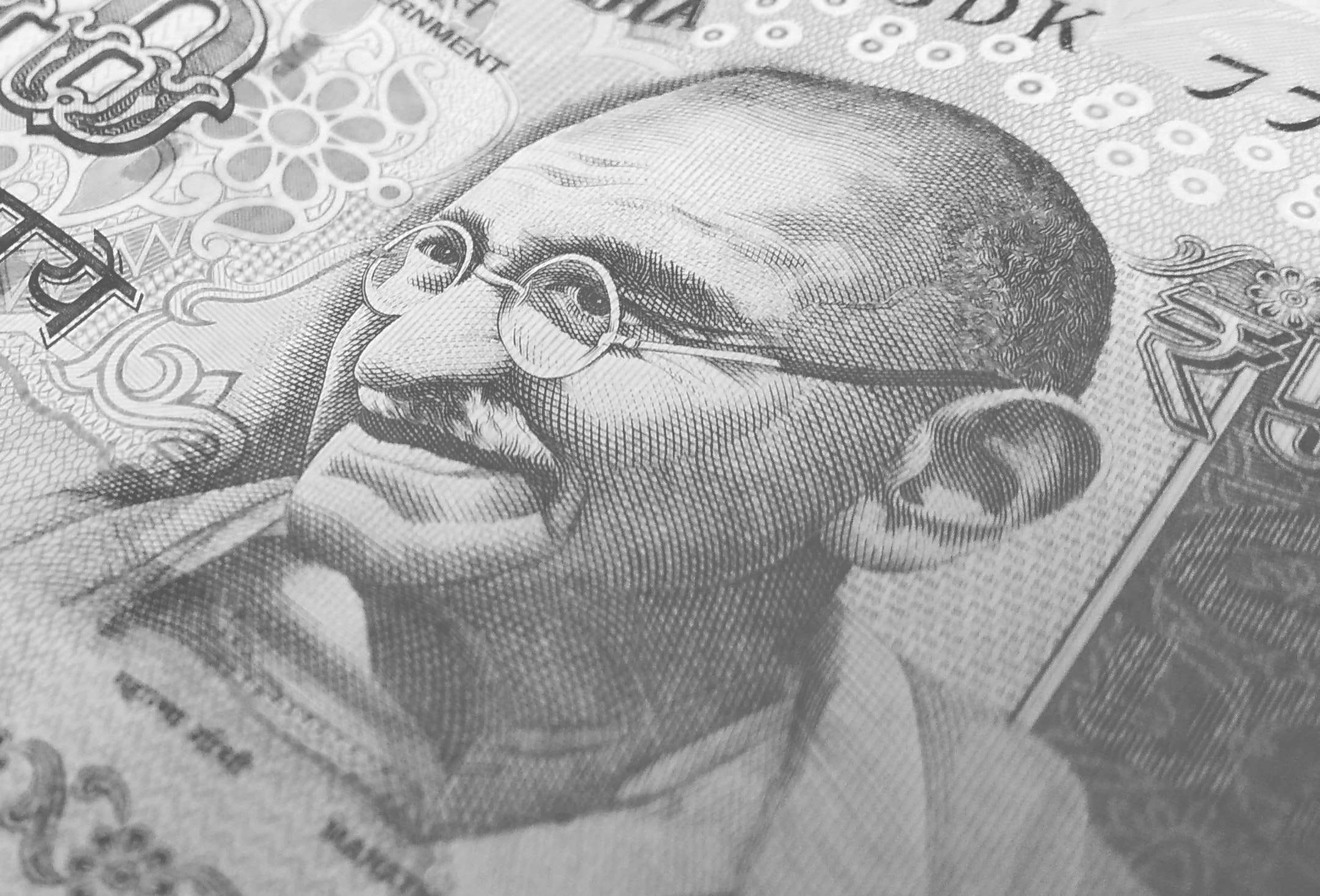Several distinct flag designs were flown in Louisiana up to the time of Civil War, but the Louisiana State Legislature selected the official design—which is still present on the flag—in 1912. Over Louisiana, more flags have flown than in any other state. There is speculation that before the current Pelican bearing Louisiana flag came, more than ten flags, which include influences from both France and Spain, were flown as the official state flag.
The current state flag, which was adapted from a design from the 1800s, has an Eastern Brown Pelican mother in white and gold against a background of solid blue. She rips at her flesh while protecting the three chicks in their nest. “Union, Justice, and Confidence” is the motto, emblazoned in blue on a white and gold banner below her in the Louisiana flag. The Louisiana state seal from the 1800s served as the inspiration for this insignia.
Reality of the Pelican Mother
In the 17th century, Louisiana adopted the pelican as its official emblem. Even further back, humans thought that pelicans giving their parched offspring blood as a symbol of self-sacrifice and commitment to growth. According to a reputable source who covers everything there is to know about pelicans, Mark Shields, the birds would never do that and would most likely leave the chicks instead. The blood drops on the Louisiana flag represent the dedication and sacrifice made by the state to uphold that unique Cajun custom for its residents. Nests of the heraldic Pelican can be seen in Louisiana’s official seal, The State Painting and Bicentennial quarter of Louisiana from the U.S. Mint (one of three symbols).
Louisiana state flag holds the state seal in the centre of its layout in a field of blue, with a 2:3 ratio in the dimensions of length and breadth. It portrays an Eastern Brown Pelican mother colored in white and gold. She is seen as shielding three offsprings with her outstretched wings and rends herself in the chest to feed them. Incidentally, brown pelican is honored as Louisiana’s official bird.
The State motto, “Union, Justice and Confidence” lies emblazoned in blue on a banner of white. The wings of the pelican hark back to the fleur-de-lis of France, a staple used in heraldry in France and Europe in general, honoring the French heritage of the colony, and now constitutes a common Louisiana symbol.
A short historical overview of the symbolism of Louisiana flag
Interestingly, the symbolism used in the seal has deeper undercurrents, stretching all the way back to ancient Egypt. Pelicans were believed to be protectors against snakes and nurturing mother goddesses to the Pharaoh lying in his pyramid. In certain nonroyal papyri, pelicans were believed to facilitate safe passages to the underworld. A rudimentary picture of the celebration of pelican’s protective virtues thus emerges and it would later be taken up by Christianity, a strong influence in Louisiana even today. We shall strive to understand the weight and impact of the same by viewing the current circumstances first.
Present Christian Influence
More than half of Louisiana’s residents are likely to attend their worship in a mundane week, says a report by George Gallup of Princeton Religion Research Center.
In a survey, 56 percent of the inhabitants of Louisiana admitted they had gone to church or synagogue in the past seven days, which arguably is the highest rate in the United States of America and much higher than the national average of 41 percent.
A strong influence is exercised by Roman Catholicism in southern Louisiana, and it could well be a potent reason for the higher weekly church participation, at least as much as the good-natured competition between the Catholics and the Protestants.
According to a survey by Pew Research Center, 75 percent of the people in the state say they believe in God with absolute certainty, while 68 percent pray daily and among the adults therein, 84 percent are Christian, 13 percent are unaffiliated with any religion and about 2 percent are non-Christian faiths.
New Orleans, which is Louisiana’s largest city, harbours the most powerful Catholic influence. All Saints Day is observed as a public holiday, and droves of people involve themselves in the penitential Ash Wednesday services, giving us important snapshots on the presence and cultural sway of Christianity.
We, however, must now reflect under what cultural mindset, the state seal bore a venerated sacramental Christian image.
Past Influence of Christianity
The first non-Native American religion in Louisiana happened to be Roman Catholicism, as a consequence of the dominant Catholic French and Spanish control of Louisiana. After the Louisiana Purchase in 1803, Protestantism was nudged into the place. Methodists, Baptists, and Presbyterians were later accompanied by other Protestant sects such as Lutherans, who were often German immigrants. As a result of these streams of Christian beliefs, attitudes and practices all focusing into a state, Louisiana assumed a primarily Christian personality.
Into the Christian Imagination
The legend ran that during the time of famine, the mother pelican wounded herself with a strike of her beak, piercing herself to feed her young with her blood. Another tale told that the mother fed her dying young with her blood to revive them from death, and thus surrendered her own life.
Tales abound. Another one says little pelicans strike their parents, and the parents, in vindication, kill them. But on the eve of the third day the mother pelican repents, rends herself and pours blood over her dead young. In this way they are reinstated in life and fed the nourishment of new breath.
In combination, these tales constitute the essence of the urgent communication of prophet Isiah, as Christ speaks through him the anguish of the Lord:
“I reared children and brought them up, but they have rebelled against me.” (Isiah 1:2)
The Christian story chronicles how Original Sin of Adam and Eve vitiated the Order of God and severed themselves into a state of sin and darkness and goes on to show how God chose to send forth his Son, who deigned to ascend the cross and suffer the lesser torments of this fallen world. In quite a telling parallel with our Pelican allegory, His side was pierced, blood and water gushed forth unto our salvation and eternal life.
History of the Seal embedded in Louisiana Flag
William. C. C. Claiborne, the governor, who was tasked with designing an official seal during a strong wave of Anti Catholicism running in the US during the time, made the image of an eagle holding a laurel wreath with fifteen stars in representation of the states of the Union. But it’s a testament to the Chirstian heritage that the seal was changed in 1812 to its current persona.
Heroics of the Eighth Grader
During the 19th century it was customary in every Louisiana flag and the state seal to have three drops of blood on the Pelican’s chest. However, this tradition (on both the state flag and seal) had been inconsistently followed, and it was noticed by an eighth-grader at Vandebilt Catholic High School in Houma who brought this to the attention of his state legislator.
The matter was resolved in April 2006, when the Louisiana State Legislature passed a bill requiring three drops of blood to be carried on the state’s flag and seal.
About Louisiana
The Deep South and South Central regions of the United States are home to the state of Louisiana. Of the 50 states in the US, it is the 20th-smallest area and the 25th-highest populous. The Gulf of Mexico surrounds Louisiana to the south, Texas to the west, Arkansas to the north, Mississippi to the east, and Mississippi to the east. The Mississippi River primarily outlines its eastern border.
One of only two states in the union not divided into counties is Louisiana, which has political subunits known as parishes instead of counties (to other being Alaska and its boroughs). The state’s capital is Baton Rouge, and New Orleans, with a population of around 383,000, is the largest city in the state.
Louisiana has a vast, fascinating history. Early Spanish explorers include Alvárez Piñeda (1519), Hernando de Soto (1541), and Ãlvar Núñez Cabeza de Vaca (1528). In 1682, Sieur de la Salle travelled to the Mississippi’s mouth and claimed for Louis XIV of France all the land that had been drained by the river and its tributaries.
Following the French and Indian Wars, Louisiana was designated a colony of the French crown in 1731 but was later given to Spain in 1763. (British rule over the region east of the Mississippi began in 1764.) In 1800, Louisiana returned to France, and in 1803, Napoleon sold Louisiana to the United States. In 1812, the southern portion, formerly the region of Orleans, was elevated to the status of a state.
Louisiana sided with the Confederacy during the Civil War, although New Orleans was taken by Union Adm. David Farragut in April 1862.
The state’s economy struggled during Reconstruction, but after the discovery of oil and natural gas and the development of industry at the turn of the 20th century, things started to get better.
Natural gas, salt, petroleum, and sulphur are all produced at a high level in Louisiana. Oil and sulphur are largely derived from offshore reserves. Large amounts of sweet potatoes, rice, sugar cane, pecans, soybeans, corn, and cotton are also grown in the state. Chemicals, processed foods, coal and petroleum products, paper, wood and lumber products, clothing, and transportation equipment are among the top manufactured goods.
The state is now a well-liked travel destination. The main attraction is New Orleans, which is well-known for its scenic French Quarter and the yearly Mardi Gras carnival, which has been going on since 1838.
The Superdome in New Orleans, historic plantations close to Natchitoches and New Iberia, Cajun country in the Mississippi Delta Region, Chalmette National Historical Park, and the state capital in Baton Rouge are some noteworthy popular attractions.
Hurricane Katrina struck Louisiana on August 29, 2005, devastated New Orleans and leaving thousands dead throughout the rest of the state, especially in the parishes of Jefferson and St. Bernard. For their tardy and insufficient response to the initial crisis and later rehabilitation efforts, federal and local officials received harsh criticism.
By: Srijani Das



